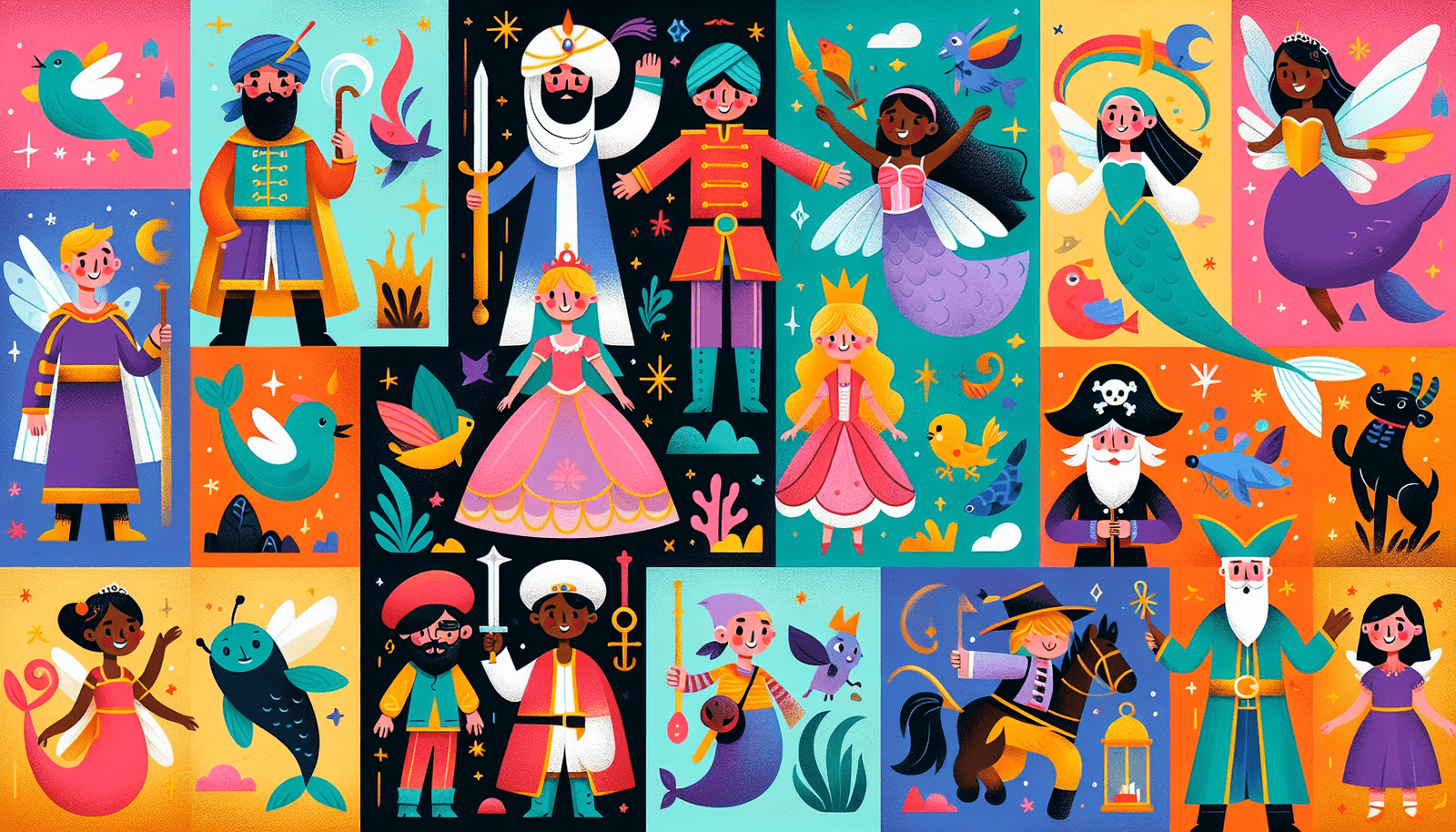Creating age-appropriate book covers that captivate children’s attention is both an art and a science. You’ll discover that the right blend of colors, imagery, and themes can significantly enhance a child’s initial interest in a book. By understanding the specific visual and emotional appeals for different age groups, you can design covers that not only draw young readers in but also encourage a lifelong love for reading. Tailoring these elements thoughtfully ensures that the cover resonates with its intended audience, making your book a cherished item in any child’s collection.
Have you ever wondered how some children’s books practically fly off the shelves while others remain untouched? The secret often lies in the book cover. When you think about it, children can’t evaluate the contents of a book without reading it first. So, the book cover is your first and most powerful tool in captivating their attention. Let’s dive into the fascinating process of creating age-appropriate book covers that children can’t resist!
Understanding Your Audience
Before you pick up a pencil or launch your design software, understanding your audience is crucial. Knowing who you’re designing for will help you make more targeted and effective design choices.
Age Groups
Children go through various developmental stages, and what appeals to a toddler will differ significantly from what captivates a pre-teen. Here’s a simple breakdown to guide you:
| Age Group | Characteristics | Interests |
|---|---|---|
| 0-2 years | Very young children, bright colors, simple shapes | Animals, familiar objects |
| 3-5 years | Pre-schoolers, more complex shapes, interactive elements | Animals, fairy tales, adventures |
| 6-8 years | Early readers, engaging characters, simple stories | Superheroes, friends, school |
| 9-12 years | Pre-teens, sophisticated themes, detailed illustrations | Fantasy, mysteries, friendships |
Preferences and Trends
Children’s preferences can vary widely within age groups. Keeping an eye on current trends can give you an edge. For instance, if unicorns are trending among 5-year-olds, incorporating them into your cover might give your book a competitive advantage.
Elements of an Engaging Book Cover
Color Palette
Color isn’t just eye-catching; it’s a psychological tool that can evoke specific emotions and reactions. For children, bright and contrasting colors often work best. Here’s a table showing which colors are effective for different age groups:
| Age Group | Effective Colors |
|---|---|
| 0-2 years | Bright primary colors |
| 3-5 years | Pastels and neons |
| 6-8 years | Bold and varied colors |
| 9-12 years | More subdued, varied tones |
Imagery
Images are arguably the first thing a child will notice on a book cover. You should aim for clear, engaging imagery. Here’s what works for different age groups:
- 0-2 years: Simple and large images, often of familiar objects or animals.
- 3-5 years: More detailed illustrations with interactive elements like lift-the-flaps.
- 6-8 years: Dynamic scenes featuring characters in action.
- 9-12 years: More complex and detailed illustrations that hint at the story’s themes.
Typography
Typography is an often-overlooked element that can make or break your design. Children need clear, readable fonts. For younger audiences, consider larger and simpler fonts. For older children, you can get more creative but still maintain readability.
Layout and Composition
A cluttered cover can overwhelm young readers. Keep your layout simple yet engaging. Here are some tips:
- Use a focal point to draw the eye.
- Ensure there’s a natural “flow” directing the viewer’s eye from the title to the imagery.
- Leave some white space to help focus attention on key elements.
Tailoring Your Design to Different Age Groups
Creating age-appropriate covers means adapting your design strategies for each developmental stage. Let’s break it down further.
Designing for Toddlers (0-2 years)
Toddlers are just beginning to explore their world visually. The key here is simplicity and familiarity.
Key Elements:
- Bright, Primary Colors: Reds, blues, and yellows can grab attention.
- Simple Shapes: Squares, circles, and triangles are easier to recognize.
- Animals and Everyday Objects: Bunnies, birds, and flowers work well.
- Touchable Elements: Books for this age often incorporate tactile materials.
Designing for Pre-schoolers (3-5 years)
This age group loves stories and characters. They are beginning to recognize more details and enjoy interactive elements.
Key Elements:
- Engaging Characters: Fairy tale figures, talking animals, superheroes.
- Interactive Features: Lift-the-flap, textured areas, holographic images.
- Imaginative Scenes: Settings that ignite curiosity, like underwater worlds or magical forests.
Designing for Early Readers (6-8 years)
Children in this age group start to read independently. They enjoy more complex and varied imagery.
Key Elements:
- Dynamic Characters: Action poses, expressive faces.
- Scenes from the Book: Illustrations that hint at the plot can attract these readers.
- Vibrant but Harmonious Colors: Bold but not overwhelming.
Designing for Pre-teens (9-12 years)
Pre-teens are on the cusp of adolescence and enjoy more sophisticated themes. Your design should reflect the increasing complexity of their interests.
Key Elements:
- Detailed Illustrations: Intricate and well-rendered images.
- Subdued Color Palette: More layered and thematic colors.
- Relatable Themes: Friendship, adventure, mystery, and growth.
Practical Steps to Create an Engaging Book Cover
Brainstorming and Conceptualization
Start with brainstorming sessions. Create mood boards, sketches, and color palettes that resonate with the age group you’re targeting. You can use tools like Pinterest, Adobe Spark, or even physical boards to gather your ideas.
Mocking Up, Testing, and Refining
After conceptualizing, create several mock-ups. Show these mock-ups to a sample audience within your target age group. Gather their feedback and refine your designs accordingly. Tools like Canva and Adobe Illustrator can help you create professional-quality mock-ups.
Final Design and Printing
Once your design is finalized, it’s time to prepare for print. Ensure your colors are print-ready (CMYK color mode), and always work with high-resolution images. For tactile elements, consult with your printers to understand what’s feasible within your budget.
Additional Tips for Captivating Book Covers
Use Familiar Characters
Children love familiarity. If you can integrate well-known characters or elements trending in children’s media, you have a better chance of grabbing their attention.
Keep it Simple Yet Detailed
While a toddler’s cover should be more straightforward, each age group’s design should still be simple enough to comprehend quickly. However, that doesn’t mean leaving out details entirely—just focus on the right ones.
Involving Children in the Design Process
Sometimes, the best way to know what a child wants is by asking them. Involve children in the design process through surveys or focus groups. Their input can be invaluable.
Avoid Overused Clichés
Steer clear of clichés unless you have a new twist to offer. Predictable, uninspired cover designs can cause your book to blend into the background rather than stand out.
Conclusion
Creating age-appropriate book covers that captivate children’s attention is a rewarding challenge. By understanding your audience, leveraging effective design elements, and being willing to iterate and refine your concepts, you can craft book covers that don’t just catch eyes but also hearts. So next time you set out to design a children’s book cover, remember these tips, and let your creativity fly!
Happy designing!



